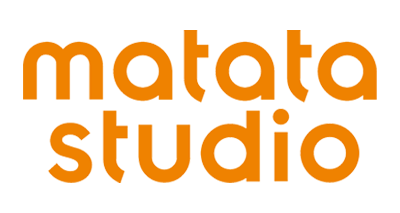
How many kids are in a group?
15
How was the MatataStudio robot(s) used?
From reading the book “Like a tree”, to observing the world around us, to the debate, we talk about civic education and develop the idea of environmental education.
An exploration and learning activity during the game to discover how much the social life of trees resembles the social life of the human being and how much trees are necessary for the survival of ourselves.
We learn to understand that:
- trees have a social life;
- the human being has a social life;
- the social life of trees is very similar to that of human beings;
man is a living being just like a tree; - the tree has behaviors similar to the human being; and they are essential for the life of the human being;
- there are different environments, natural and artificial, which must be protected, to consequently protect the “healthy” and “safe” life of us children;
- in the world there are different natural environments in which trees grow strong and luxuriant;
- the anthropic environment does not protect the life of a tree; – we can get help from MatataStudio to learn to respect trees:
- we build the natural environment closest to us, THE FOREST, in which trees grow “happy” and “free”.
- WE EXPLORE THE NATURAL ENVIRONMENTS THAT SURROUND US, WE RECYCLE MATERIAL IN OUR CLASSES TO BUILD THEMATIC MAPS (THE FOREST), FOR MatataStudio who in a role-playing game dives “HERRY, the child helper of the forest who protects trees and teaches children how to help who gets lost while walking in the forest.
To build our forest we used: - sheets of old notebooks with which we built the trunks and branches of the plants;
- green paper napkins to cut out the leaves and cover the roots of trees to protect them from the cold of winter and the intense sun of summer;
- dry leaves collected in the school yard;
- big colour cardstocks present in the classroom for the map of our “Forest”;
- used sheets of notebook for MatataStudio to help us build the source of the river and the river in the forest.
We measured the MatataStudio pace to understand how to grill the Bristol billboard.
We used all our drawing pencils, to measure the length of our river, to understand where it should start from and where it ends.
We programmed MatataStudio to draw as many squares as needed to build our river, because the forest animals need water to quench their thirst.
In programming MatataStudio we discovered that the MatataStudio “movements” repeated themselves and since we did not have enough elementary “go ahead” instructions, we started using “repetitions”, with number blocks for single instructions and with blocks dark green “loop” for groups of instructions that have repeated.
Some more intuitive girls, not having enough blocks for their programming, experimented and discovered the yellow blocks for “functions”, explaining to their classmates that once a procedure was built and named, they could simply recall it, saving programming blocks.
Thus discovered the procedure for building a square, they kept it and recalled it if necessary.
What skills did it develop?
The activities with MatataStudio, leverage on the “game” and stimulate the interest, attention, communication skills, curiosity of children and their creativity.
In this learning environment, children develop the idea of protecting the environment, respecting trees also through paper recycling.
MatataStudio favors a laboratory setting in the classroom, therefore children: they have developed manual skills;
they have trained problem solving skills;
they experimented and discovered arbitrary and standard length measurements;
they used the programming blocks of ELEMENTARY INSTRUCTIONS, REPEATS, CYCLE, FUNCTION and discovered the concepts of procedure, bug and debugging, using the number blocks, to make a procedure more efficient;
they learned how to use programming blocks to draw different shapes, paths and to find out the size of objects;
they have consolidated the advantages and disadvantages of natural and anthropogenic environments;
they have learned to respect each other, to cooperate, to collaborate, to wait their turn, to help their partner, building the environment for MatataStudio (the forest) and programming the robot to make it move in the forest;
they observed the changes in flora and fauna in a natural environment with the passage of time;
they discovered what a water source is, a river, a lake, what is the water cycle and CHLOROPHILLIAN PHOTOSYNTHESIS
What worked best and what was challenging?
Activities in the small group turn out to be successful. Like all educational robotics activities, each robot must have a group of no more than four children.
ADVANTAGES: MatataStudio is an excellent mediator to keep the attention of children on the didactic activity that they have experienced as a “game”. These 7 and 8-year-old children committed themselves to building their environment with MatataStudio for one hour a week, for two months and each time complained that they did not want to interrupt the activity to do something else.
They easily learned the proposed didactic contents, without ever taking their eyes off the activity or moving away from the group. MatataStudio manages to leverage children’s interests, at least initially, by focusing on their motivations: the spark of interest in their eyes has allowed us teachers to have relaxing and fun moments to devote to the learning process.
The interest is then fueled by the wonder when they understand that the robot can write and draw if programmed to do so.
The only disadvantage: it would be necessary to increase the programming blocks in the coding kit set of MatataStudio.
How did students respond?
The pupils developed empathy and a spirit of collaboration: in wanting to play with MatataStudio at all costs, they respected all the class rules, acquiring interdisciplinary contents without even realizing it.
Almost all children have discovered and learned with joy and autonomy in a peer to peer, while maintaining a high level of concentration. Those who walked away from the group was because they did not agree to wait their turn to play in MatataStudio programming.
What is the favorite function for the students?
Use the blue repeat blocks with the little numbers and the dark green cycle blocks.
Share your comments upon the class using MatataStudio
Children love to use the number blocks to repeat single elementary instructions and the blocks of the repetition cycle: these special blocks facilitate the writing and drawing function so much, allowing them to obtain the necessary shape or design in the absence of elementary instruction blocks.

 日本語
日本語

